You are a scientist who has just boarded a ship departing from Ganymede to Demeter 1, a planet in orbit around Demeter (a red dwarf with two twin planets). Demeter 1 — and its counterpart Demeter 2 — have an Earth Similarity Index of 0.98. The first reconnaissance flight revealed the presence of dinosaurs. Explore and discover the secrets of Demeter 1!
Demeter is a card-based roll and write game (or a “flip and fill” like Welcome To… or Ripple Rush) from publisher Sorry We Are French that follows the theme of their 2018 release, Ganymede. If you’re familiar with Ganymede, you’ll notice the artwork and graphic design are similar, but you don’t have to play one to jump in and understand the other.
In Demeter, the goal is to score the most points, but the route and strategy taken to achieve this will vary from player-to-player and from game-to-game depending on the cards drawn and the objectives in play.
Assembling your Expedition Team – Setup
Normally I don’t go into setup details in my reviews, but for Demeter there are a few things I’d like to point out.

There are five different decks of cards that players use throughout the game to take actions. Each deck consists of 15 cards, but during setup three cards are randomly removed from each, adding some variability and suspense to each game.
Additionally, four of the six double-sided Objective tiles are laid out above the Objective board (the board depicting A, B, C, and D). Each tile serves as a way for a player to score additional points if they unlock the ability to score it. Not only will the tiles that are in play each game vary, but also their position on the Objective board (and subsequently how they’re unlocked).
Now that you have some inside scoop on the setup, let’s look at how to play Demeter.
Understanding Demeter’s Gameplay
A game of Demeter is played over 12 rounds, which are divided into three phases. Each round, players simultaneously choose one card, perform its action, and gain a bonus.
The first phase of a round is to reveal a card from each deck.
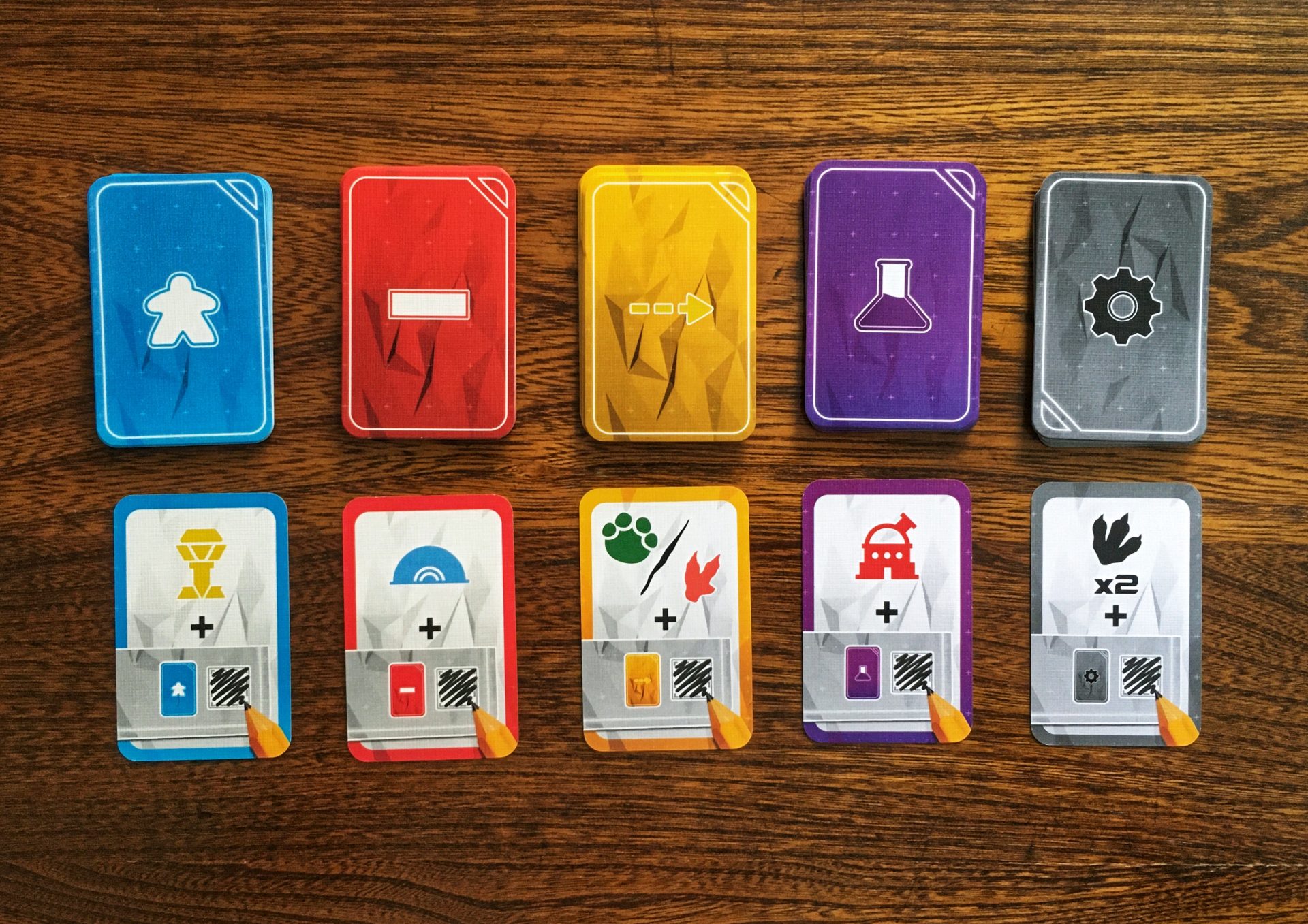
Next, players simultaneously choose one of the revealed cards and perform its action. When you resolve a card you don’t take it, meaning that any other player can use the same card as you. (This concept will feel familiar if you’ve played other roll and write games.)
To perform the card’s action, you first outline the leftmost square on your Scoresheet that corresponds to the card colour. There are only four squares for each colour of card so you can only choose the same colour four times at most. The more Action cards of one colour you use, the more powerful the bonus ends up being…that is except for the gray cards, which instead grant a bonus when every square in a column is coloured in.
Then in the second phase you perform the action depicted on the top of your chosen card.

Finally, in the third phase, you resolve the bonus in the square you just outlined on your Scoresheet and colour it in (this is indicated on the bottom of the Action card you chose).
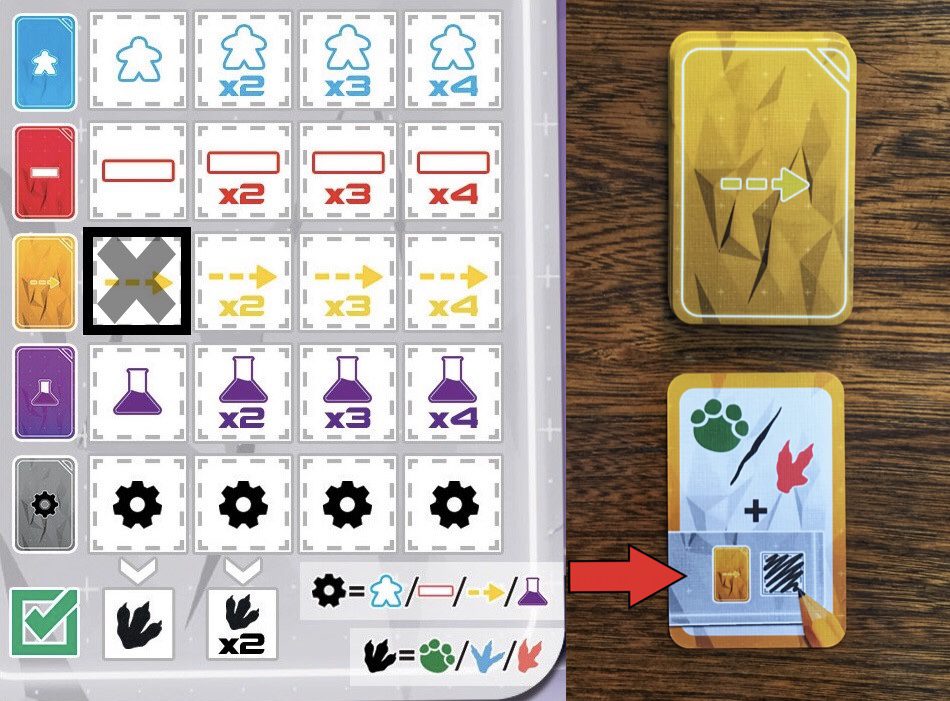
Once all players have resolved the three phases of the round, a new round begins. After 12 rounds (when the decks run out of cards), players tally their points and whoever scores the most wins.
Let’s Find Some Dinos – Actions & Bonuses
Demeter relies heavily on iconography, but unlike some other games (yes you, 7 Wonders and Race for the Galaxy), the icons are intuitive and fairly easy to understand. The icons are also differentiated by both colour and symbol, making everything more accessible for players. Each icon is associated with different actions that let players colour in a matching icon/space somewhere on their Scoresheet. For instance, a red dinosaur footprint icon lets a player colour in a dinosaur section that depicts the same footprint icon. What you choose to colour in on your Scoresheet and where will depend on the strategy you’ve chosen to pursue.

If you colour all sections of a dinosaur, you’ve discovered it and might score points for it at the end of the game. Additionally if you discover an entire species — by colouring and discovering all the dinosaurs of that species — you also score points. Moreover, a discovered dinosaur can be studied (by colouring in the yellow arrows leading from it); once all arrows are coloured, you gain an immediate bonus or an end-game scoring opportunity.
The observation posts (red rectangle) grant points for each discovered dinosaur equal to the value on the rightmost completed observation post in the same environment. Furthermore, colouring in rungs on observation posts will allow a player to colour in more scientists (blue meeple), unlocking bonuses and scoring points along the way.
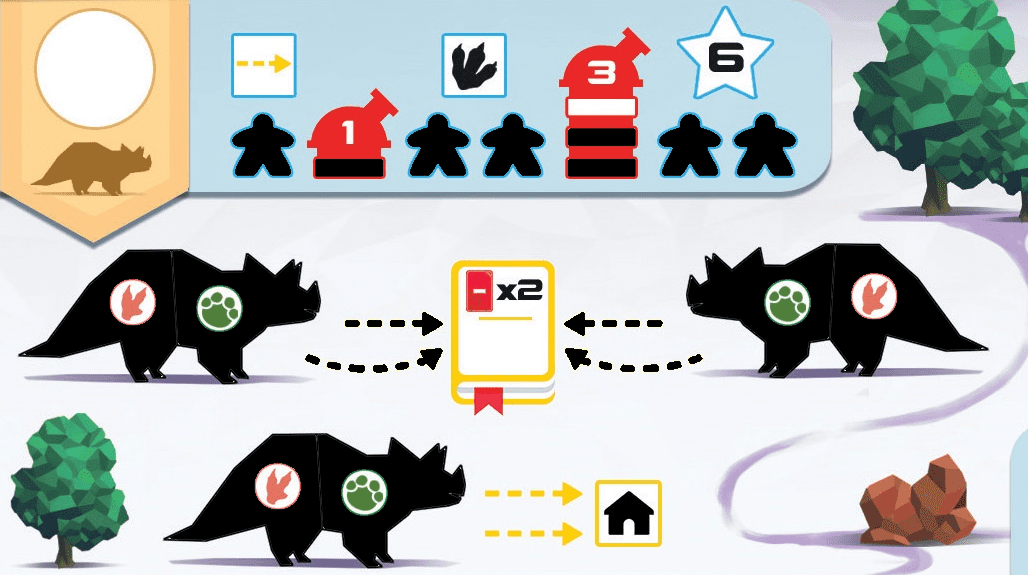
Your progress on the research track, represented by the Erlenmeyer flask, could unlock the ability to score Objective tiles A, B, and C — as well as grant you bonuses along the way. Objective tile D is unique in that you don’t use the research track to unlock it, rather you must either discover and study two Brachiosauruses or four Gallimimuses to unlock it.
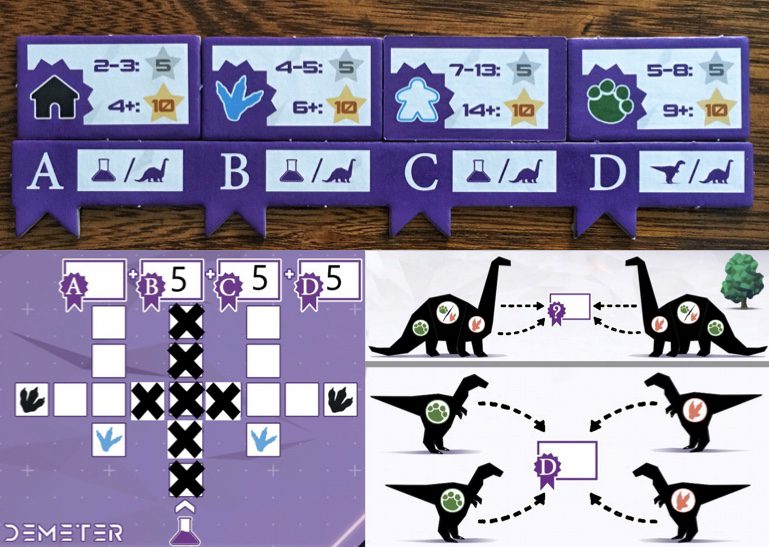
Players can also construct buildings (through the ‘house’ icon action) that give them a once-per-round bonus such as replacing a footprint with a wild icon or colouring in an extra arrow, observation post, scientist, or research space.
Finally the cog lets players perform a single action to recruit a scientist, build an observation post, study a discovered dinosaur, or colour in a research space.
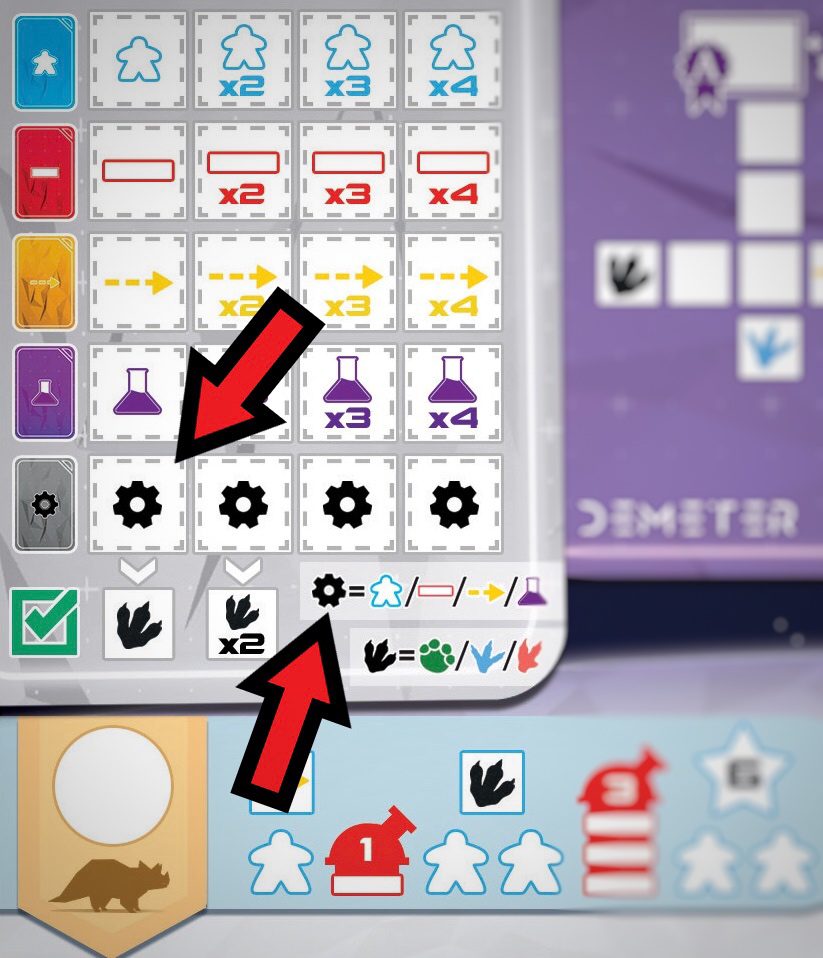
Successful Mission? – Scoring
The steps for scoring are all indicated at the top of the Scoresheet. First, to score the Objective tiles, you must have unlocked the ability to do so (through the research track and/or the dinosaurs). Then, score points based on how well you achieved the objective. Next, you score points for each environment where you recruited all the scientists and for each species you discovered entirely. Then score points based on the number of different dinosaur species discovered.
You’ll also score points for your rightmost completed observation post in each environment: the value of the observation post multiplied by the number of discovered dinosaurs in that species.
Finally any completely studied dinosaurs that grant end-game points are scored.

Final Thoughts
I will come right out and say upfront: wow, do I ever love this game! The graphic design is clear and intuitive, the artwork is isometric and stunning just like Ganymede, the components are nice, the gameplay is fantastic, and while the theme is mostly pasted on, I do like how it follows the story of its predecessor.
I’m a big fan of roll and write games and my favourites are always the games in this genre that give players the chance to power things up and then do combos. Colour this in to later be able to perform this action that will trigger a bonus, allowing me to colour in something else, trigger another bonus, and unlock an end-game scoring target. There is something so exciting and satisfying about firing off this kind of combo and feeling like everything is really coming together. You know what I’m talking about: the kind of combo that has you wait until the other players are paying attention so that you can share your combo-tastic move step-by-step with them. As one of the other players you can revel in your opponent’s awesome turn. This is, in essence, Demeter’s gameplay.
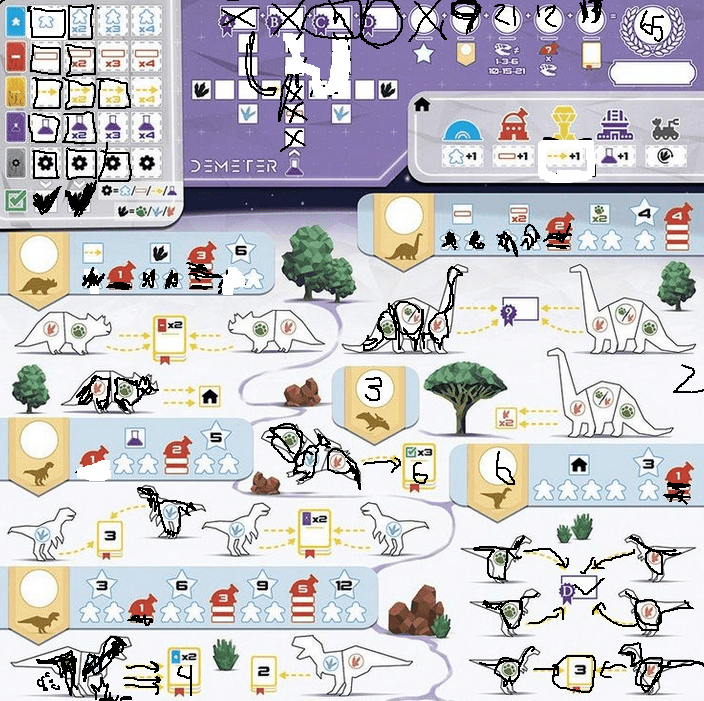
Demeter is a more complex and “thematic” roll and write game than the usual fare in the genre. Yet more than anything, it feels like you are playing a mini Euro game. With its many paths to victory, interconnected elements, and limited number of turns and actions, Demeter is a very tight game. There is some randomness in the cards that are included in the game’s setup and the order in which they are revealed, but with five decks to choose from every turn and their associated bonus actions, you should always be able to do something on your turn — even if that means your action isn’t as exciting as you hoped it would be.
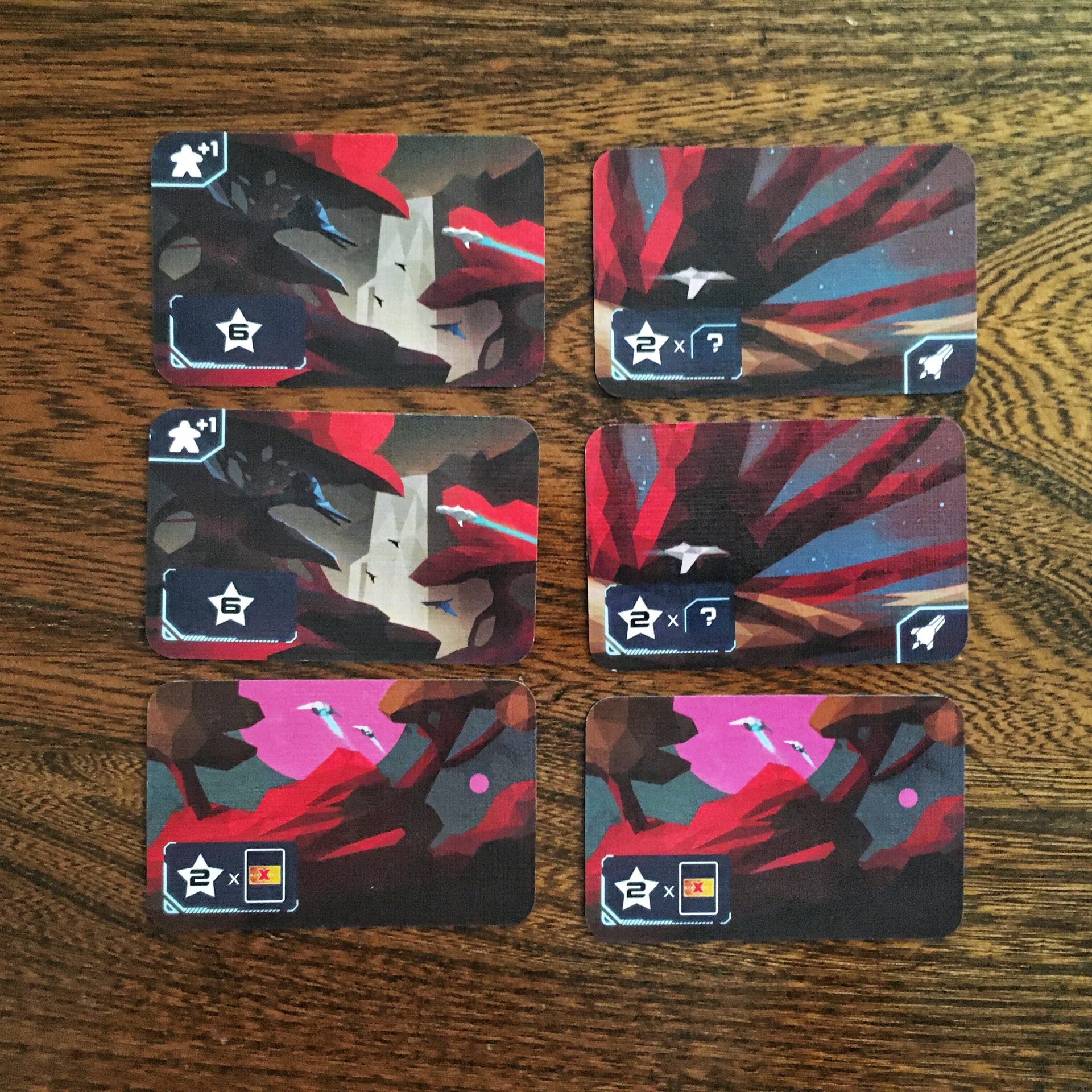
There is also a ton of variability in Demeter; not only are you just using four of the twelve objectives each game, but they’re also occupying a different lettered slot, which means the path to unlocking the ability to score them also varies. Additionally, consider that three cards are randomly removed from each deck during setup so you’re likely to never play the same game of Demeter twice.
My only quibbles with Demeter are small. The first is that, at the time I’m writing this, Demeter is unfortunately only available in Europe as it has yet to be picked up by a North American publisher. The second is that the game lists the player count as 1+, but there is no mention of the solo experience in the rulebook — no changes to gameplay noted or even a chart to compare your score. Thankfully, while I was perusing Sorry We Are French’s website, I found the solo details there available to download (as well as a mini expansion).
If you’re a fan of roll and write games, Demeter is an obvious choice. It offers all that roll and write goodness (even though it’s card-based), features a different theme, and is quite brain-burning for such a quick-playing experience. If you don’t typically like roll and writes, you may be surprised to find Demeter is still a game you enjoy — I’ve had really positive experiences playing Demeter with friends who aren’t fans of the genre and turning them into believers.
Thematic Music for Playing Demeter
An obvious choice here would be the music from the 1977 film, Planet of the Dinosaurs — not because it’s esepcially good, rather it just fits Demeter’s theme so perfectly. Unfortunately I was unsuccessful in my attempts to find it online. In lieu of it, here are three other suggestions that might help set the dinos in space tone for your gameplay.


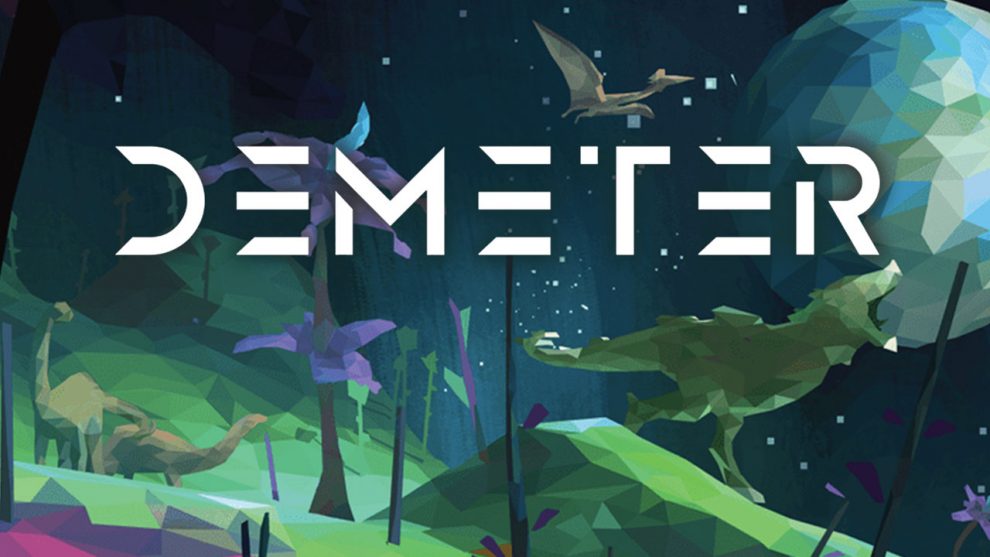

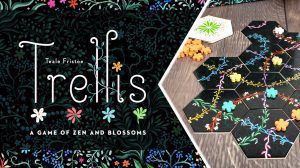






Great review, I really want to get this game.
You mention the solo experience/rules. Can you point me to where you found them?
Thanks!